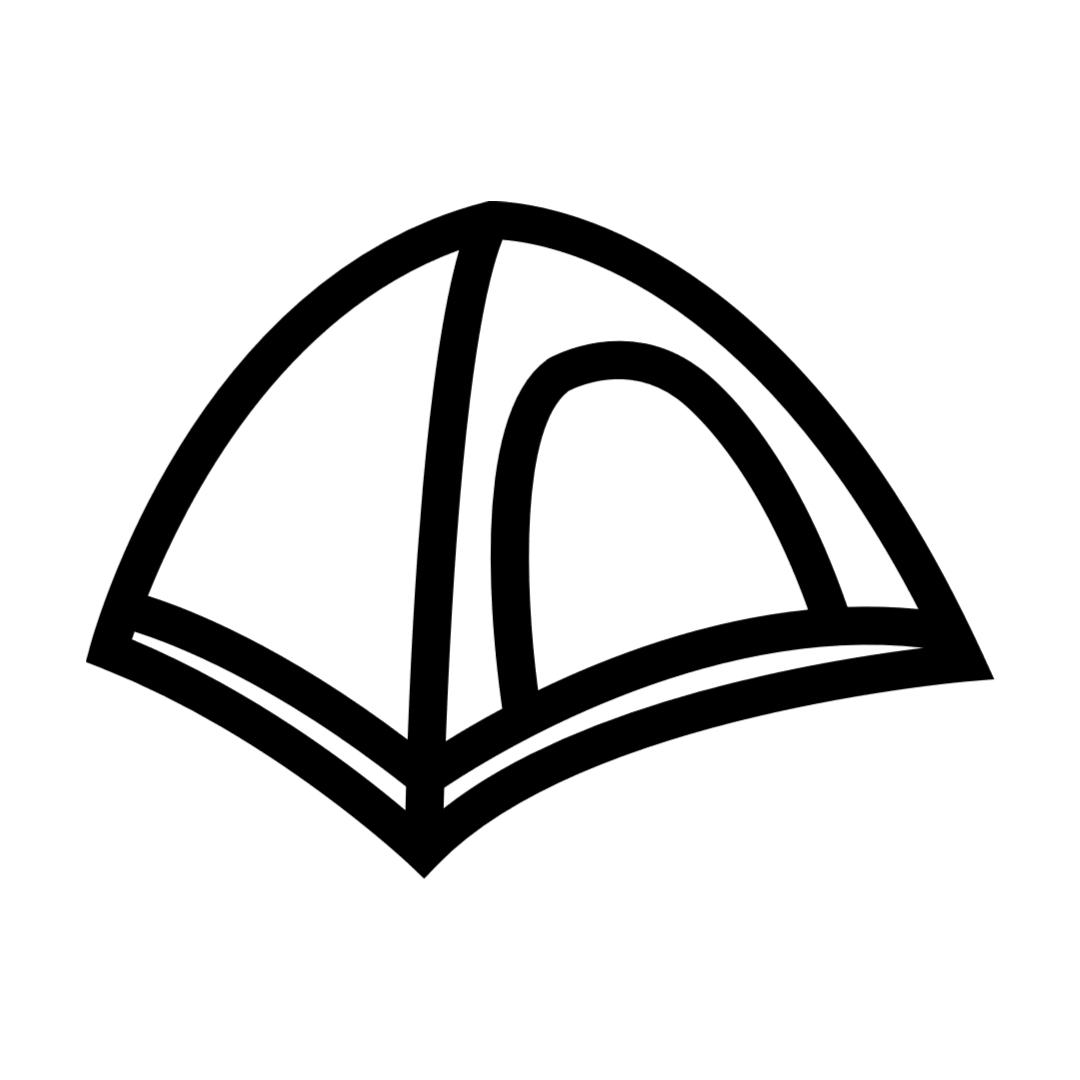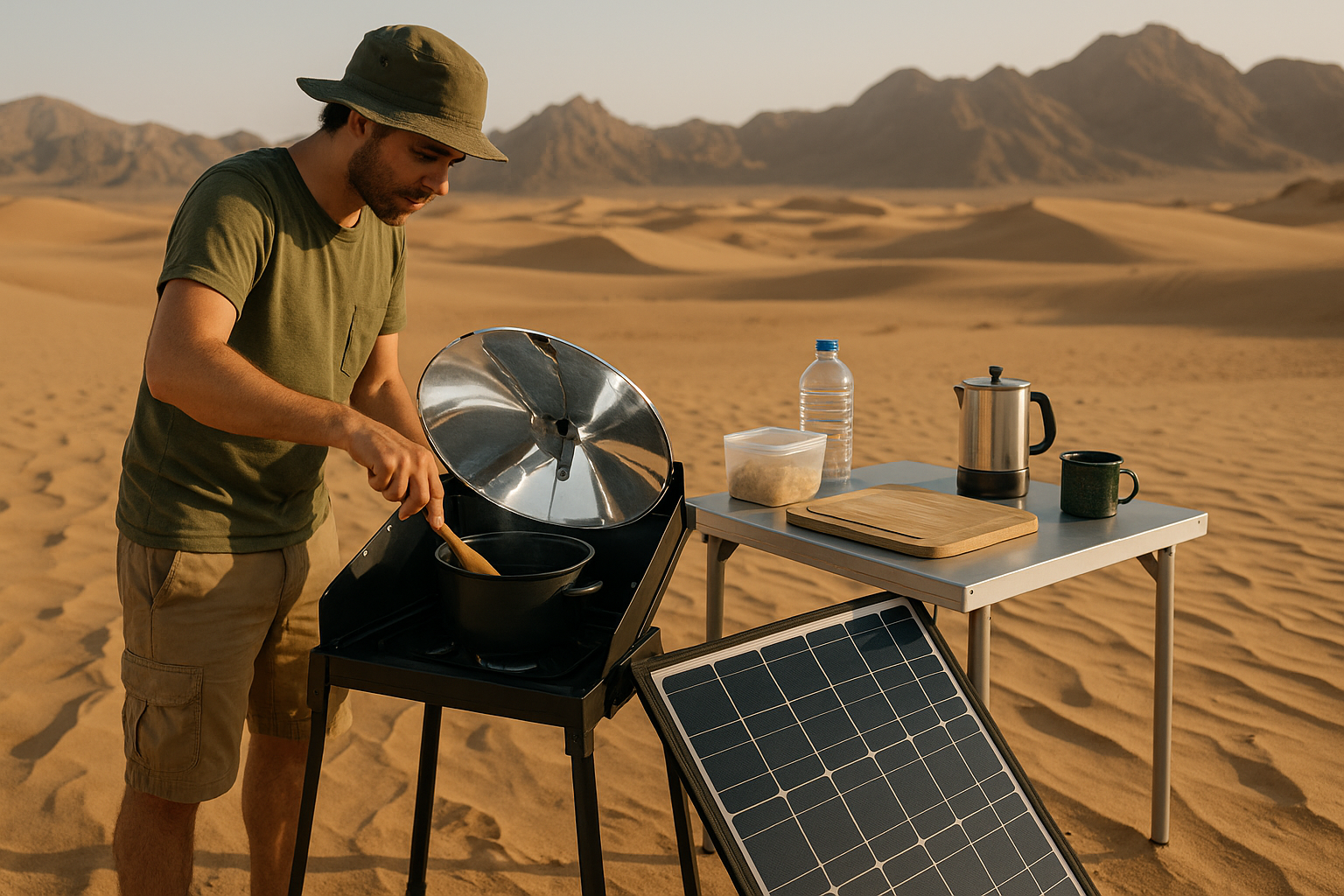Picture this: you’re deep in the desert, where temperatures swing wildly between scorching days and freezing nights.
You didn’t plan for a fire ban.
Your fuel ran out.
And your stove? Left behind or useless.
But you’re not out of options.
In fact, you’re about to tap into one of the most underutilized camping resources: solar power.
This isn’t just about setting up a fancy solar panel for gadgets.
It’s about transforming sunlight into survival fuel—cooking hot meals, sterilizing water, and warming yourself, all without open flames or gas.
Here’s your complete guide to building a solar-powered camping kitchen, even in the most unforgiving desert environments.
🔥 Why You Need a Fire-Free, Solar-Powered Solution in the Desert
Desert survival isn’t just about heat. It’s about managing resources:
- Fire bans are common in arid regions to prevent wildfires.
- Fuel is heavy to carry and unreliable.
- The desert sun can either fry you or save you—if you harness it right.
By using solar energy:
✅ You minimize gear weight.
✅ Avoid fire-starting risks.
✅ Tap into an infinite fuel source.
🏕️ Core Components of a Solar-Powered Camping Kitchen
You don’t need an RV-grade solar setup. You need compact, multi-use gear that fits in a backpack.
Here’s what to pack or build:
1️⃣ Compact Solar Cooker
These foldable or collapsible cookers use reflective panels to concentrate sunlight and cook food directly.
- Best Options:
- GoSun Sport Solar Oven (folds down to the size of a yoga mat)
- SolSource Solar Cooker (adjustable focus for high-heat cooking)
- DIY Alternative:
- Aluminum foil panels inside a cardboard box lined with black paint.
- Use a dark-colored, lightweight cooking pot for maximum absorption.
2️⃣ Reflective Thermal Blanket + Cookware
Double your solar efficiency by lining your cooking area with reflective emergency blankets. This maximizes heat and cooks food faster.
- Use a black or dark pot for solar absorption.
- Cover with a glass lid or clear plastic wrap to trap heat.
3️⃣ Collapsible Solar Water Pasteurizer
Safe drinking water is non-negotiable.
- Use a solar pasteurization bag (like the SODIS method with clear plastic bottles) to kill bacteria.
- DIY: Fill a clear PET bottle, lay it flat in sunlight for 6+ hours. If temperatures reach 65°C (149°F) or higher, water becomes safe.
4️⃣ Portable Solar Panel for Backup Gear
While it doesn’t cook, a 10W–20W foldable solar panel can charge:
- LED lights
- Phones (for GPS)
- Small 12V fans to cool your cooking area
- Compact USB-rechargeable appliances like hand blenders or coffee frothers
🏜️ Step-by-Step: Build Your Desert Solar Kitchen
🔨 Step 1: Find a Sun-Exposed, Wind-Sheltered Spot
- Set up your kitchen early, when the sun’s angle allows maximum exposure.
- Look for natural windbreaks (rocks, dunes) to keep panels stable.
🔨 Step 2: Angle Your Cooker or Reflectors
- Use a compass app to face your cooker directly at the sun.
- Adjust every 20–30 minutes for maximum exposure.
- If DIY, position foil-lined panels to reflect into your black cooking pot.
🔨 Step 3: Prep Solar-Optimized Meals
You won’t be frying bacon at high heat, but you can:
- Simmer rice or lentils (in a dark pot with 2x water ratio)
- Bake flatbreads or biscuits in a covered black pan
- Slow-cook vegetable stews or rehydrate dried meals
- Pasteurize water for safe drinking
🔨 Step 4: Control the Temperature
- Cover pans with glass lids or clear wrap to trap heat.
- Rotate pots to avoid uneven cooking.
- Avoid opening the cooker too often, which releases heat.
🔨 Step 5: Use Cooked Food as Heat Storage
- Place sealed, solar-heated food pouches (rice, beans) in your jacket lining or sleeping bag to warm your core at night.
- This double-duty trick turns your food into a heat pack.
🧠 Real-World Tips from Desert Survivalists
🏜️ “I’ve cooked pasta in a DIY solar oven using just black pots and reflective foil in Death Valley. It takes longer, but the results are edible and life-saving.”
— Sarah J., ultralight backpacker
🔆 “A solar cooker with a parabolic reflector can boil water for coffee by mid-morning in the Mojave. It’s hands-off and frees up your time.”
— Luis M., desert overlander
💡 Advanced Hacks: Supercharge Your Solar Kitchen
- Combine Multiple Reflectors: Use extra emergency blankets or car sunshades to boost thermal gain.
- Use a Black Rock Base: Place cookware on a large, sun-heated black stone to retain extra warmth.
- DIY Solar Dehydrator: Stretch mesh over a black tray under a reflective hood to dehydrate fruits or jerky.
🎒 Essential Gear List (Desert-Ready, No-Fuel Cooking)
| Item | Why It’s Essential |
|---|---|
| Foldable Solar Cooker | Main heat source, compact and lightweight |
| Black Cooking Pot | Maximizes heat absorption |
| Reflective Blanket | Increases solar efficiency |
| Clear Plastic Bottles | Water pasteurization |
| Compact Solar Panel | Backup charging and cooling |
| Emergency Water Filter | For non-solar-treated sources |
| Dark Tarp or Stone | Additional heat retention |
🌄 Conclusion: Survival Cooking Without Fire or Fuel
In a world where fire bans and fuel shortages can turn a camping trip—or desert emergency—into a disaster, your solar-powered camping kitchen is more than a gadget.
It’s life insurance.
By harnessing sunlight, you cook meals, purify water, and stay warm without risking a wildfire or running out of gas. With minimal gear and some DIY ingenuity, your desert survival game stays strong—even when the landscape feels merciless.
So, the next time you find yourself lost in the desert, don’t curse the sun. Use it.
👉 Ready to build your solar kitchen? Start with a simple foldable cooker and reflective setup—you’ll be amazed at what you can cook with just the sun.

